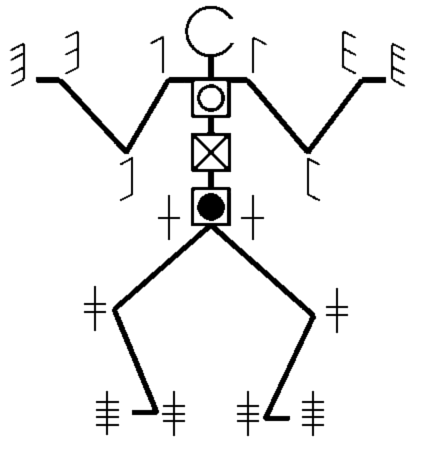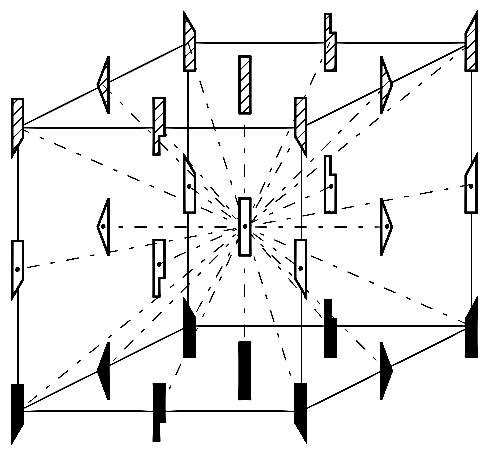Tool to learn and understand Laban notation. Laban has developed a notation of the movements and gestures of the human body: Labanotation (also called kinetography).
Labanotation - dCode
Tag(s) : Notation System
dCode is free and its tools are a valuable help in games, maths, geocaching, puzzles and problems to solve every day!
A suggestion ? a feedback ? a bug ? an idea ? Write to dCode!
Labanotation
Labanotation
The Laban notation has two main sets of symbols. The first symbols denote the parts of the body and the second notation represents the position of these parts of the body in space. See below for more details.
Answers to Questions (FAQ)
What is Labanotation? (Definition)
Laban notation (or Labanotation) is a cinetographic notation of gestures movements and gestures adapted to the human body designed by the Hungarian dancer Rudolf Laban.
How to note body parts with Labanotation?
The different parts of the body: arm, forearm, hand, head, leg, feet, etc. each part of the mobilizable body has its symbol. 
See books like here (affiliate link)
How to note the gestures in Labanotation?
How to represent simultaneity and succession of moves?
A complete move (a figure or a dance in kinetography) is a set of movements that can be simultaneous or successive in time. The elements of the labanotation are usually written in a table whose ordinates (vertical axis) represent the time (from bottom to top) and the columns represent the laban notation performed simultaneously. From the center to the outside the movements concern the body, the legs then the arms, then the hand, then the head.
Source code
dCode retains ownership of the "Labanotation" source code. Any algorithm for the "Labanotation" algorithm, applet or snippet or script (converter, solver, encryption / decryption, encoding / decoding, ciphering / deciphering, breaker, translator), or any "Labanotation" functions (calculate, convert, solve, decrypt / encrypt, decipher / cipher, decode / encode, translate) written in any informatic language (Python, Java, PHP, C#, Javascript, Matlab, etc.) or any database download or API access for "Labanotation" or any other element are not public (except explicit open source licence like Creative Commons). Same with the download for offline use on PC, mobile, tablet, iPhone or Android app.
Reminder: dCode is an educational and teaching resource, accessible online for free and for everyone.
Cite dCode
The content of the page "Labanotation" and its results may be freely copied and reused, including for commercial purposes, provided that dCode.fr is cited as the source.
Exporting the results is free and can be done simply by clicking on the export icons ⤓ (.csv or .txt format) or ⧉ (copy and paste).
To cite dCode.fr on another website, use the link:
In a scientific article or book, the recommended bibliographic citation is: Labanotation on dCode.fr [online website], retrieved on 2025-04-16,

